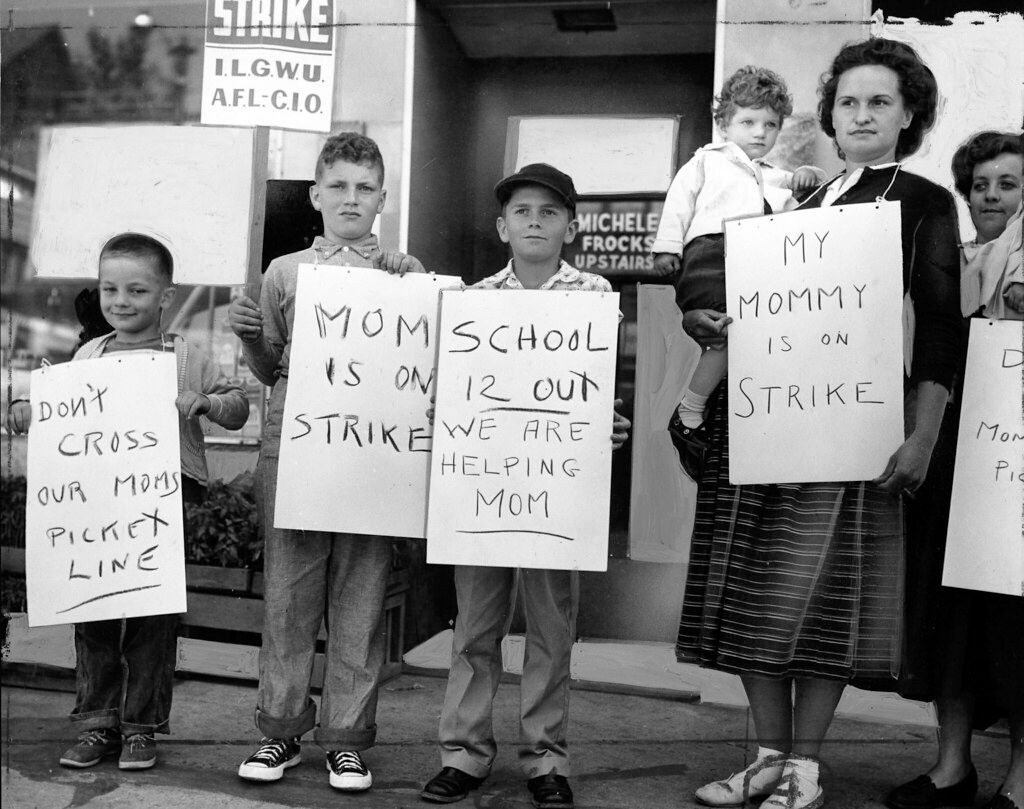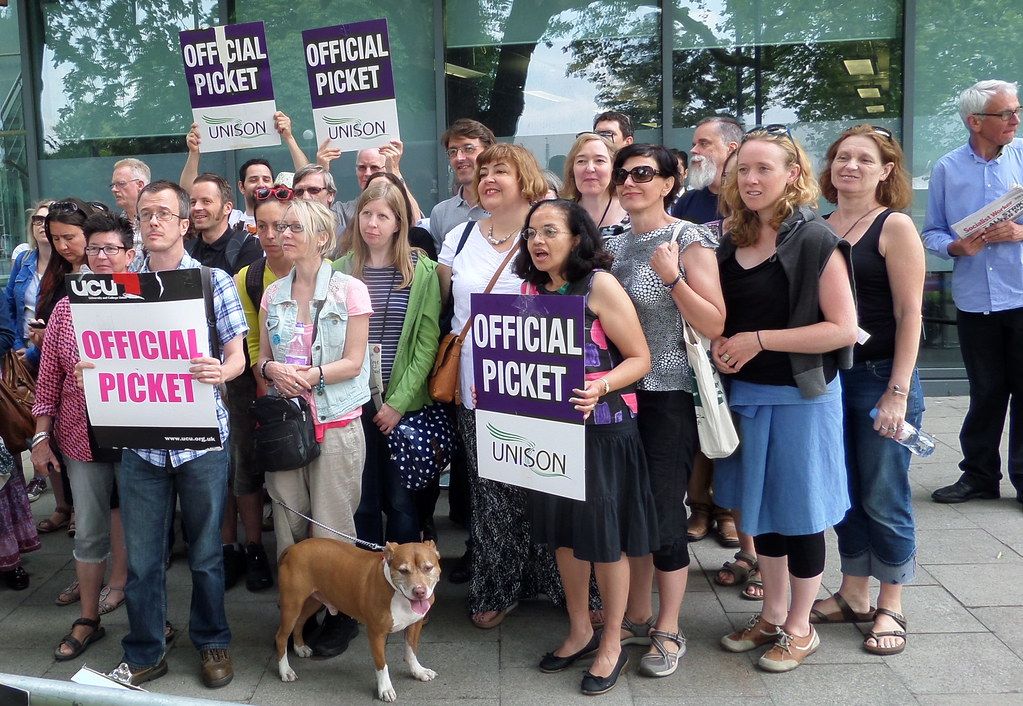Imagine if nobody showed up to work one day. Nothing would get done, money would be lost and production would grind to a halt. You don’t need a business degree to know that this scenario would be bad for the company.
That’s exactly why strikes are so effective.
Workers have a lot of power when they band together. Sometimes, that power lies in withholding labor to get employers to negotiate fairly and improve workplace standards. Think of it as the ultimate worker flex.
Not all strikes involve walking off the job, but those are certainly the type to make headlines. Some strikes entail workers moving at a maddeningly slow pace when they’re on the clock, or having everyone call in sick on the same day. In these cases, nobody is picketing in front of a business, but they’re also not helping the company’s bottom line.
The concept of strikes is pretty straightforward: Stop working until certain demands are met, typically during the contract negotiation process. But there’s a lot more to work stoppages and slowdowns than meets the eye.

How are strikes organized?
As with many things union-related, going on strike is a team decision that’s reached through a vote. It’s important that the majority of a union supports the move because, well, not working takes a lot of work. For a strike to be successful, unions need all hands on deck.
Established unions recommend that units intending to strike should set up several internal committees to raise awareness, re-engage members, organize picketing activities, apply pressure to the employer and fundraise to help workers financially during the strike. Depending on the size of a workplace, it can get pretty complex, so preparation is key.
There’s another benefit to all that preparation: It signals that a unit is serious about striking — and is ready and able to make it happen. That implication alone can be enough to convince employers to rejoin negotiations and bargain fairly, avoiding a strike altogether.
Whether a first-time striker or a seasoned pro, it’s a good idea for everyone to work closely with experienced advisors who can guide workers through the process. Unit, or a similar organization, can help.

Types of strikes
Did you know there are several different kinds of strikes? Get a good sense of each, because depending on what you’re striking over and how you’re going about it, you can enjoy different levels of government protection.
Economic strikes: When workers go on strike over subjects like wages, how many hours they work or PTO, that’s called an economic strike. Makes sense, right?
The fine print: Workers cannot be fired for participating in economic strikes, which might happen during contract negotiations. But! Employers are legally allowed to hire replacement workers. That means that the striking workers, if replaced, have to wait for a spot to open back up again at their company after the strike ends.
Unfair labor practices (ULP) strikes: Employers don’t love negotiating contracts with unions. Sometimes, they’ll try to pull a fast one by abruptly declaring an impasse (another way of saying they can’t come to an agreement with the union), or refusing to bargain in good faith. Those are prime examples of unfair labor practices, which hello, are illegal. Unions who just aren’t getting anywhere with obstinate employers can file a grievance with the National Labor Relations Board, or if things are looking dire, vote to go on strike.
The fine print: Under the National Labor Relations Act, workers striking over unfair labor practices enjoy more protections than those striking for economic reasons. For example, workers must get their jobs back after a ULP strike, even if the employer already hired replacements. Sometimes, they even get back pay. There is some grey area around what constitutes an economic strike versus a ULP strike, so talk to an advisor or legal expert who can help you navigate where your issues fall.
Wildcat strikes: We love a saucy name. A wildcat strike is not protected by the NLRA, because they’re technically breaking some kind of rule. Maybe there’s a “no striking” provision in the contract between an employer and a union that’s getting ignored. Or maybe union leaders didn’t authorize a strike — or a union didn’t vote on one — but workers are striking anyway. Maybe a workforce isn’t even unionized but collectively decides to walk off the job to protest unfair working conditions. Any way you slice it, they’re still effective.
The fine print: Again, wildcat strikers get no love from the NLRA, so discipline and termination are on the table. But the high stakes haven’t stopped workers at Target, Instacart, Amazon and other companies from taking action.

Do strikes work?
Strikes are complex and emotional events, which is why they’re not used unless it’s absolutely necessary. And lately, it's been necessary.
In the past three years, strikes have been growing in popularity in the United States. As labor protections and livable wages have taken hit after hit, workers are utilizing every tool they have to make their voices heard. Strikes have a way of getting a point across. Loudly.
You may have seen some high-profile strikes splashed across headlines. Here’s how they ended up:
- In 2019, a General Motors strike lasted 40 days before management folded and met their demands for wage increases, signing bonuses and job protections.
- In 2019, 30,000 Stop & Shop workers went on strike. After 11 days, the grocery chain signed a new three-year contract with increased wages, health benefits and overtime pay.
- In 2018, teachers in West Virginia went on strike for nearly two weeks, coming back to work only when there was a five percent pay increase.
- So, do strikes work? We’d say so.




